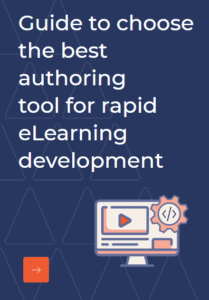‘Learning and Marketing’ sounds odd doesn’t it? Well, might seem so, considering that learning has often been associated with the Human Resources function- onboarding, induction and so on. Marketing function on the other hand has been more about creating a place in the market, roping in the buyers or the prospective clients etc. The only bit of learning (if we can even call it that) is through the infomercials, the mini clips about products or services.
Marketers primarily try to leverage consumer behavior to get the best out of their advertising and promotional activities. It wouldn’t be wrong to say that learning principles have always been a part of advertising. Very often it relies on Classic conditioning, where the marketers hinge on certain aspects of the society and upbringing that are biologically hard-wired, say for instance fitness and fairness. Other way to grab attention and get results is Operant Conditioning, wherein certain behaviors and the proposed consequences leads to change in the subsequent behaviour. Take for instance most retail advertisement that focus on positive reinforcement, the reward system in shopping. Increase in Candy sales too is often accounted to operant conditioning wherein the buyer eats the candy, tastes it and as a consequence is more likely to buy similar candy in future. The third is the Vicarious Learning, where the consumer doesn’t go through the learning themselves but learns by observing the consequence on others. This highly hinges on emotions like sympathy, empathy and fear. For example, the Anti- Dandruff Shampoo advertisement, the audience clearly sympathizes with the character that gets humiliated due to dandruff, which then manipulates the minds into buying the same product.
Well, that’s a gist of how learning plays a role in advertisement design and marketing. Marketers mainly focus on short-term memory, chunking and reinforcement. And learning as we know focuses on these aspects too. Let’s look at the roles Learning plays in the marketing strategy.
Competitive Edge - How often does the lack of understanding amongst clients lead to loss in business? While most purchasers study the products well before purchase, advertising and marketing also should give them a clear picture. Brand launches hence should focus on the intricacies, the key highlights of the product. This helps the buyers or clients to make an informed choice hence, cutting out major competition that lacks in terms of quality information.
Building Trust - Marketing and advertisement are often considered as the mask and often tend to misguide the clients with false promises and unwanted hype. Instead of selling just superficial information, marketers should focus on giving more. Take for instance microwave companies, they not only offer informative recipe books, but also have a learning portal from where new users can learn and polish their cooking skills. This in turn helps the users/clients trust the brand.
Trust then does great many things. The brand becomes a local name because word-of-the-mouth does the work. Clients often tend to rely on suggestions and recommendations, hence creating a larger customer base. In some cases, the early clients even provide positive and negative feedbacks that can be helpful in fine tuning the product. In the long term this tends to create a brand name that can be trusted. The brand then markets itself. Providing small learning opportunities often tends to engage the clients more than plain advertising gimmicks.
Learning is everywhere. However, the trick is how you bring it to the learners/user/target audience/clients. Microlearning, mobile learning and video-based learning are the first steps towards integral learning and marketing.
Knowzies Technology Solutions has been providing learning solutions across the globe, to a versatile client pool with complex learning requirements. If you are looking for innovative and engaging solutions, just drop us a mail at info@www.knowzies.com and we shall get back to you in a jiffy.



